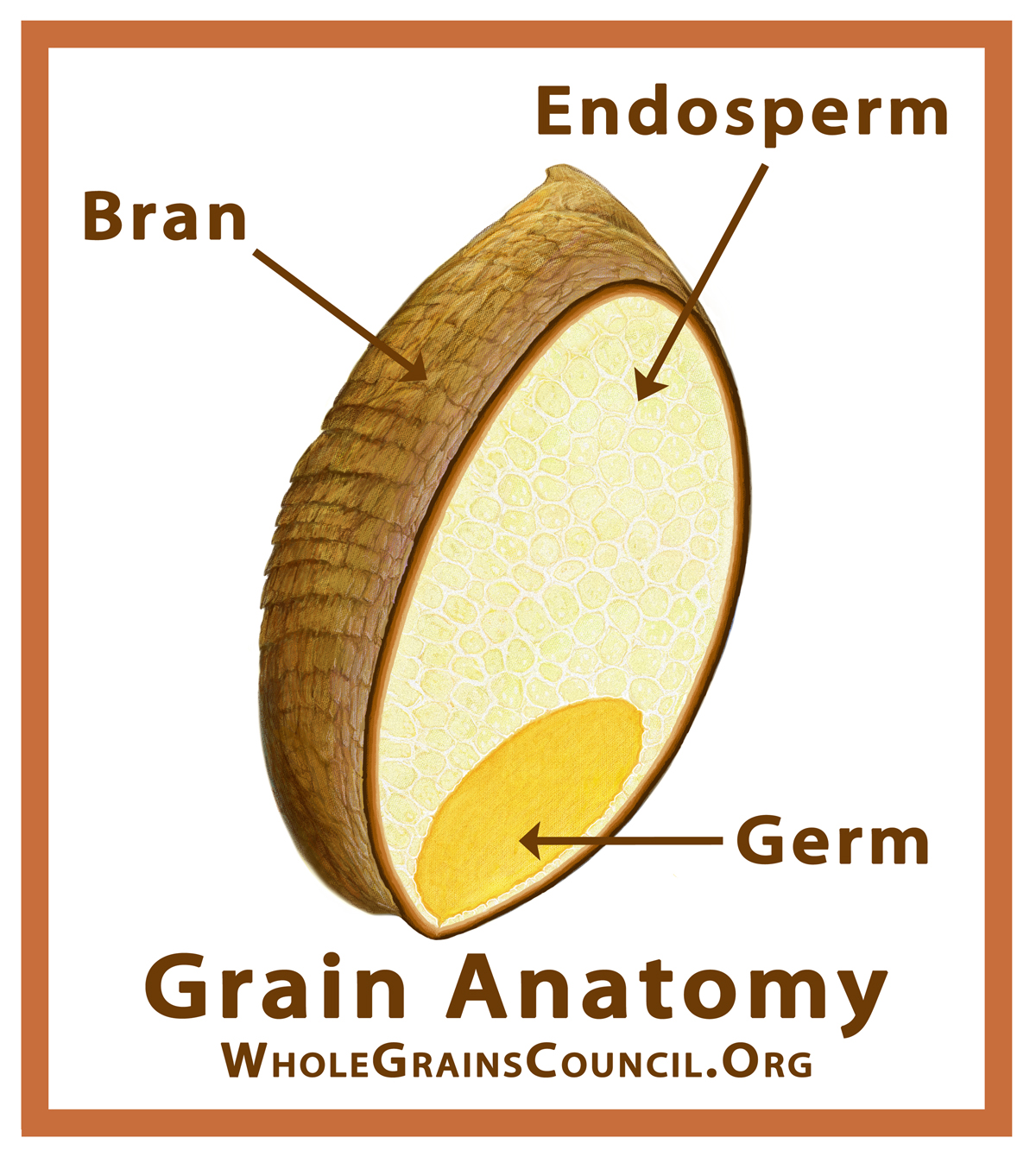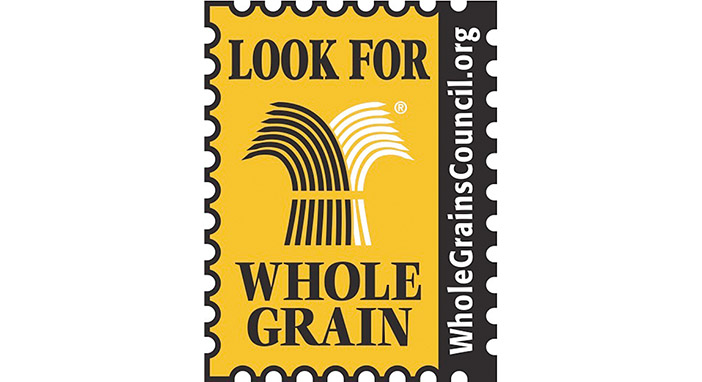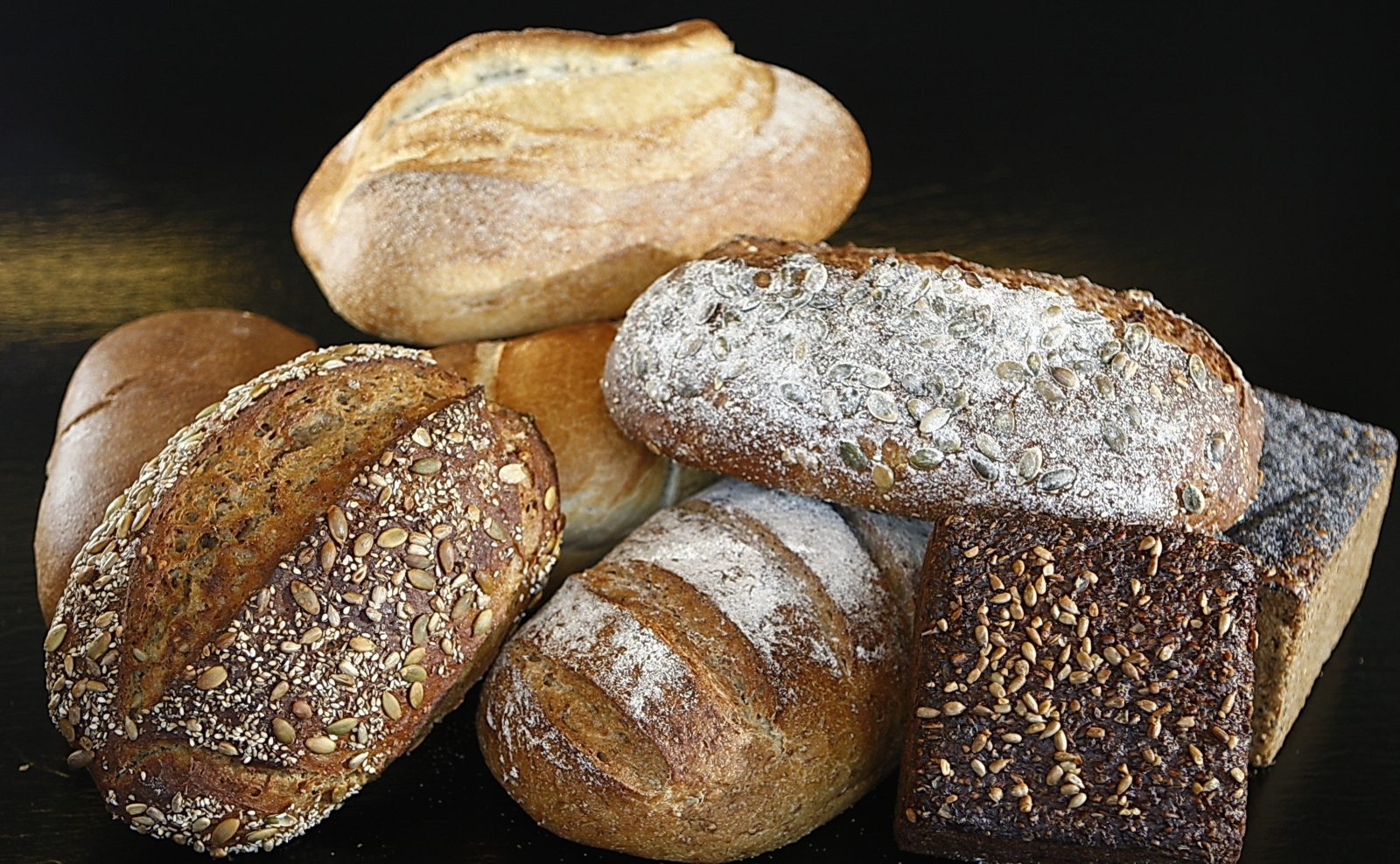It’s amazing how something as simple as grain has become so confusing. Is it good or bad? Did our ancestors eat it? Is whole wheat the same thing as whole grain? What does fortified mean? I hope to clarify this a bit for you today.
Let’s start with the basics. Grains are cereal crops cultivated for food such as wheat, barley, rice, oats, corn, quinoa, and rye among others. In its simplest definition, a whole grain is consumed in its whole, natural state, unprocessed. A whole grain has 3 main components- the bran, endosperm, and germ. Think of those little nesting dolls that stack in each other smallest to largest. A grain is similar to three of those dolls stacked together. The outer shell is the bran, the middle is called the endosperm, and in the very center is the germ. Whole grains utilize the entire grain and imply all 3 components are present.

“Refined” grains are processed to remove the bran and germ, leaving only the endosperm. While this makes for a white, soft, fluffy product (such as white flour or white rice) the brand and germ contain all the nutrients and after processing these beneficial antioxidants and phytochemicals are thrown to the wayside. Processed grains are essentially worthless compared to their whole counterparts when it comes to nutrient value.
Whole grains have a significant, positive impact on our health. Consuming these foods lowers the risk of heart disease, diabetes, and cancers. (1). Knowing this, and that processed grains don’t provide these nutrients, food manufacturers add nutrients back into the processed grain. Yep, that’s right- grains are processed to remove the nutritional components, then nutrients are added back in hopes of getting some of the benefit whole grains
“Processed grains are essentially worthless compared to their whole counterparts when it comes to nutrient value.”
You now understand whole grains are better for you than processed grains. Got it. Now, here’s the really hard part. How do you know what you’re eating or buying is a whole grain? For example, the terms “wheat flour” and “multigrain” sound like promising names, when in fact those terms don’t imply they are not a processed grain (multigrain only means different grains are used, and wheat flour does not designate
The easiest way to identify whole grains

The next best method is to look at the first item on the ingredients list. It should say “whole”. That means the primary ingredient is a whole grain. If a whole grain is listed further down the list, that means it isn’t the primary grain source. Words like “enriched” or “refined” indicate a processed grain.
Cooking with whole wheat flour is different than cooking with white flour, and products are usually more dense and require different instructions. Many whole wheat recipes call for a blend of whole wheat flour and white flour for this reason, which is better than a completely enriched white-flour product.

If you’re used to buying enriched grain products, transitioning to mostly whole grain products can be a little overwhelming. Start with your staples like sandwich bread or your kid’s favorite snack product. Try experimenting with whole wheat flour in your baked products. The taste initially may seem different, but as with anything eventually, you get used to it and typically come to prefer it. Our bodies have a way of craving the things we need over the things we don’t. To me, whole grain products are much heartier and full of flavor.
- BMJ. 2016 Jun 14;353:i2716. doi: 10.1136/bmj.i2716.





